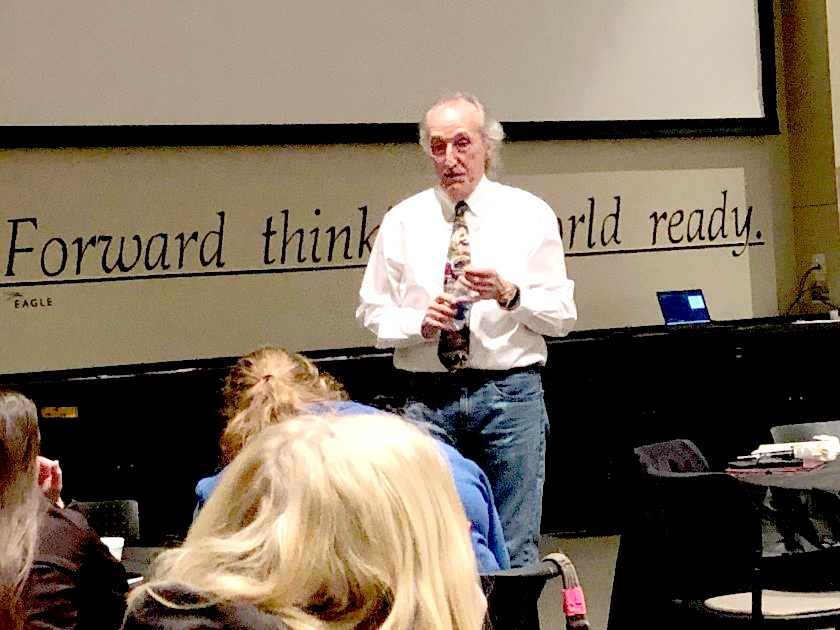By EMILY BENNINGSDORF
Keith Bolsen has found his life’s passion in the world of silage.
Bolsen is a retired professor from Kansas State University with 49 years of experience. He has served as major professor for 39 graduate students who have gone on to earn 28 M.Sc. and 19 Ph.D. degrees.
Fort Hays State University was fortunate to have Bolsen talk Wednesday to share his take on managing and feeding silage safely.
A bunker silo is a pit that holds feed for animals, and it usually has side walls and a back. A silage pile is a large mound of feed typically covered to prevent moisture getting in. The face is the open ended side of the pit/pile where people take the feed to make rations.
Silage piles are extremely dangerous to be around. Bolsen and his wife, Ruthie, travel to different operations to help train men and women on the dangers of bunker silos and silage piles.
“The most beneficial part of this job is helping people learn how to be safe. All silage accidents can be prevented with practicing safety on site,” Bolsen said.
The safety trainings that he and his wife put on can save lives.
During his presentation Bolsen brought up a dairy nutritionist named Doug DeGroff. One day, DeGroff was pulling samples from a 12-foot silage face when an avalanche occurred and he was trapped. He ended up having approximately 20 tons of silage fall on top of him. DeGroff ended up having a broken back but made a full recovery.
DeGroff is one of the few lucky ones when it comes to a silage avalanche. When people walk up to a silage face, they should keep a distance of three times the height of the face.
“The hardest part of trying to help farmers learn and implement silage safety is getting them to think that it could happen to them,” Bolsen said.
Making sure the buddy system is used could save a life when it comes to safety.
Bolsen wants everyone to realize they are at risk of being in danger being around bunker silos and silage piles.
Some easy ways to prevent fatal accidents around silage include putting up warning signs, marking where the bunker and silage piles end, people walking around a silo bunker should always wear a safety vest, keeping the bunker the size your equipment can reach, having employees take breaks when working, and always let someone know when you are heading out around the silage.
The Silage Safety Foundation was started by Bolsen and has much to offer farmers. The foundation creates resources so talking to crews and managers is easier. Bolsen and his wife consult farmers in the beef and dairy industry trying to start a silage safety program or try and help them improve the one the farmer already has. Bolsen travels to present and host training workshops to help crews learn and teach about silage safety.
Lastly, the foundation offers scholarships. These scholarships have funds that will go back to families who have lost a loved one in a silage accident.
Silage is about getting animals the best feed possible in a ration. Slowing down and executing precautions when taking samples of the piles or getting silage from the area could save a life, Bolsen stresses.

Bolsen answers a question asked after the presentation. 
Bolsen and Cranwell catching up during the dinner. 

Silage pile from Bolsen’s Silage Safety Foundation. 
Bunker Silo from Bolsen’s Silage Safety Foundation. 
Bolsen speaking about silage safety to students.

